Photo Essay: One-of-a-Kind Nature Walk Explores the "Spirical"
/Exploring how our local lands and waters can provide a spiritual sense of place
Photos and essay by Melissa Diemand, Senior Director of Communications
Goose bumps dotted my arms as I walked down the short, dirt path to greet Beth and the others. Whether it was from the chill in the air or anticipation of the morning’s walk, one thing was certain: I was about to experience the Potomac in a new way. A spiritual way.
When I have explored spirituality it has nearly always been inside four walls. Beautiful walls, of course, with statues, paintings, and stained glass windows that draw me into their stories.
It wasn’t until a fateful evening last spring that I was prompted to think outside the box, so to speak, about spirituality.
“The Potomac is our sacred,” Beth’s voice rang from the stage.
I was in the back row of a packed auditorium listening to a group of panelists at the DC Environmental Film Festival. It was the end of the evening, and the night was winding down. But with those five simple words, Beth had my attention.
Founder of the Center for Spirituality in Nature in Arlington and a panelist that night, Beth Norcross presented a powerful idea: you don’t have to travel far to find special outdoor places; you can find sanctity in our local lands, wildlife, and the Potomac River.
After connecting that evening, the Center and Potomac Conservancy forged a new partnership to explore water’s relationship with ourselves, each other, and the world around us.
As a part of this journey, Beth teamed up with Katie, the Conservancy’s Director of Community Conservation, to host a first-ever Spirituality of Water Walk along the Billy Goat Trail.
Eager to explore the Potomac in this new way, I joined them for the autumn outing.
Grab a walking stick and hike along with me. Let’s go!
Beth and Katie co-led our group of a dozen or so local residents from Maryland and Virginia, providing insights into spirituality and conservation.
Our journey began at a bridge crossing into the C&O Canal National Historical Park in Potomac, Maryland. A brisk October morning, I was thankful I brought a wool hat and extra layer.
Helping to put us in a mindset open to reflection and observation, Beth read us a poem aloud:
At Blackwater Pond
By Mary Oliver
At Blackwater Pond, the tossed waters have settled
After a night of rain.
I dip my cupped hands. I drink
A long time. It tastes
Like stone, leaves, fire. It falls cold
Into my body, waking the bones. I hear them
Deep inside me, whispering
Oh what is that beautiful thing that just happened?
We made a silent trek along the C&O Canal towpath to the trailhead of the Billy Goat Trail B. This simple exercise challenged our group to embrace the quiet, letting the sounds of nature replace the noise of our daily lives.
The trail seemed to come alive underneath our feet. With each passing step, fallen leaves swished and crinkled creating a cacophony of sound unique to the season.
Golden foliage surrounded us on the trail as trees transitioned from their former verdant selves. We were lucky to hit the start of peak foliage. What a lovely backdrop to our walk!
Along the way, we spotted signs that we share this land and our river with others. A beaver had his eyes set on this tree, a perfect addition to his dam.
When hikers become scarce, local wildlife claim the trail for their own during the early morning and evening hours
Beth Norcross Spirituality of water potomac river
The first stop on our walk brought us to a pleasant overlook and our first peek of the Potomac River.
Beth considered the relationship between the physical and spiritual – or the “spirical” as she dubs it. Gaining a better understanding of our local lands and waters can give us new insights into our own spiritual exploration.
Katie shared information about the Potomac River, its origins, and its importance to the health of our region. The upper reaches of the Potomac begin in the Allegheny highlands and flow over 300 miles past rural and suburban areas, through the nation’s capital, and on to the tidal waters before reaching the Chesapeake Bay.
Over 60 percent of our bodies are made up of water and for us locals, that means the Potomac. The river provides drinking water to over five million people in the greater Washington, DC area.
This river runs through us and through our communities, connecting us to a greater community of Potomac Riverans.
As Beth simply put it, “It’s in you. You are the Potomac.”
Beth used the small, younger branches to identify a Boxelder, a tree in the maple family. She also taught the group how to identify sycamores and hackberry trees by their bark patterns.
We meet the river’s edge at last!
Our group learned more from Katie about the threats that face the Potomac, including pollution from urban runoff, agriculture, and litter. To bring home her point, she showed off a three-foot piece of Styrofoam found along the trail.
"Do unto those downstream, as you would have those upstream do unto you."
Beth suspects water played an important role in human's early understanding of spirituality and a higher source of power. Water is a force critical for life. Its abundance, scarcity, and unpredictable nature likely spurred humans to think about its source and its connection to us and our world.
To gain a fuller understanding of the river, we split into four groups to observe the river and its surroundings using only one sense. We opted to skip taste!
Touch
Those in the touch group closed their eyes and dipped their hands into the river. At water’s touch, a few recalled childhood memories of family outings along streams and rivers. And to the surprise of the group, they discovered the temperature of the water was warmer than the air.
Smell
This group honed into the smells around them. Outside of the city’s reach, they observed a clean smell or the absence of smell completely.
Sound
As this group found, concentrating on hearing is easier without movement or sight. They heard nearby hikers, squawking birds, and wind rustling the trees. They also heard traffic noises from a street in the distance.
Through it all, the river’s gentle rushing over small rocks persevered. As one of the listeners put it, "The river wants to be heard!"
Sight
The sight group spied on a flock of birds across the way. They noticed how the river’s flow was interrupted from time to time with small ripples, signaling life thriving in its current.
At the end of the exercise, each sensory group offered observations with fascinating, and sometimes surprising, insights. Together, we had a unique, community experience of the Potomac.
On to our next stop!
We’re greeted by another magnificent view of our Nation’s River. The overlook provides the perfect place to relax and sit in silent contemplation.
On the final leg of our hike, we popped off the trail and walked back up the Canal towpath. Along the way, we tested our nature ID skills in a fun scavenger hunt.
Hmm, is that a paw paw or a maple?
All good things must come to an end.
To wrap up the hike, Beth read another thought-provoking poem:
From The Satisfactions of the Mad Farmer
By Wendell Berry
I crossed a place where a stream flows
Underground, and the sounds of the hidden water and the water come to light braided in my ear.
I think the maker is here, creating His hill
As it will be, out of what it was.
For a time there
I turned away from the words I knew, and was lost.
For a time I was lost and free, speechless
In the multitudinous assembling of His Word.
The walk provided an alternative outdoor experience that left me with a new appreciation for the Potomac.
Awakened by silent observation, we can gain a new perspective of the river and how this treasured resource benefits our “spirical” health, our community, and the local wildlife that share our home.
I’ll leave you with a sampling of the beautiful autumnal views we enjoyed throughout the morning.
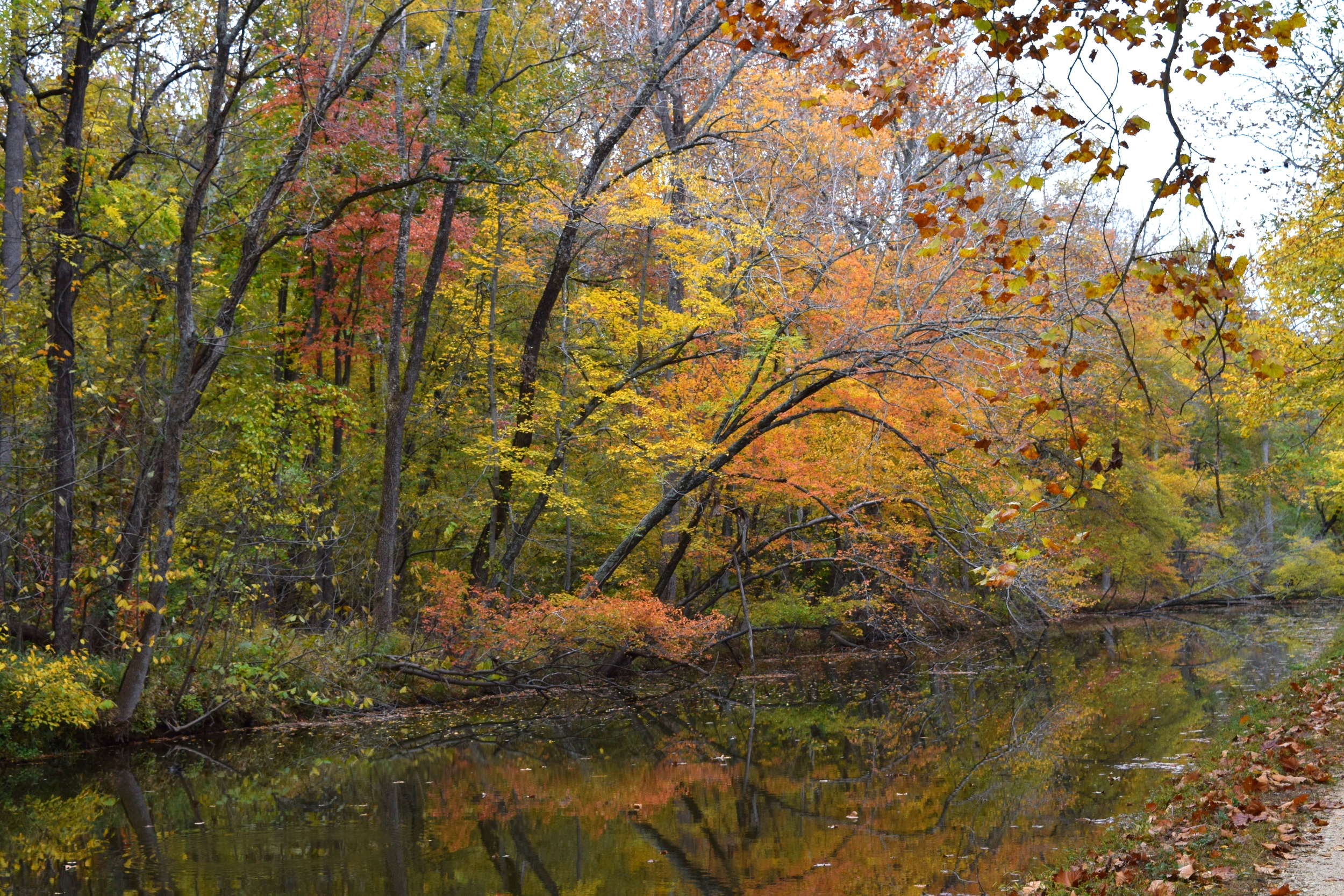
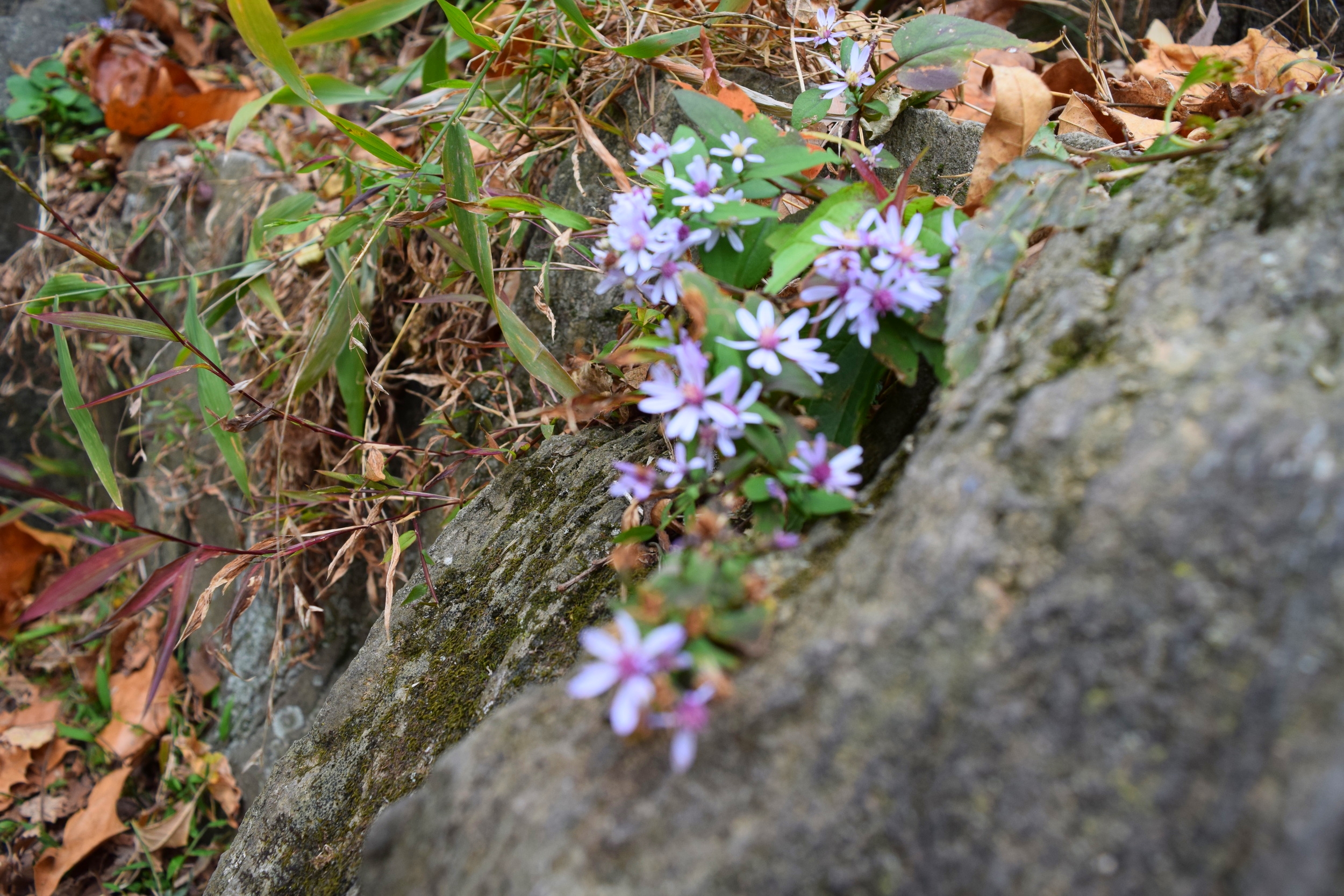

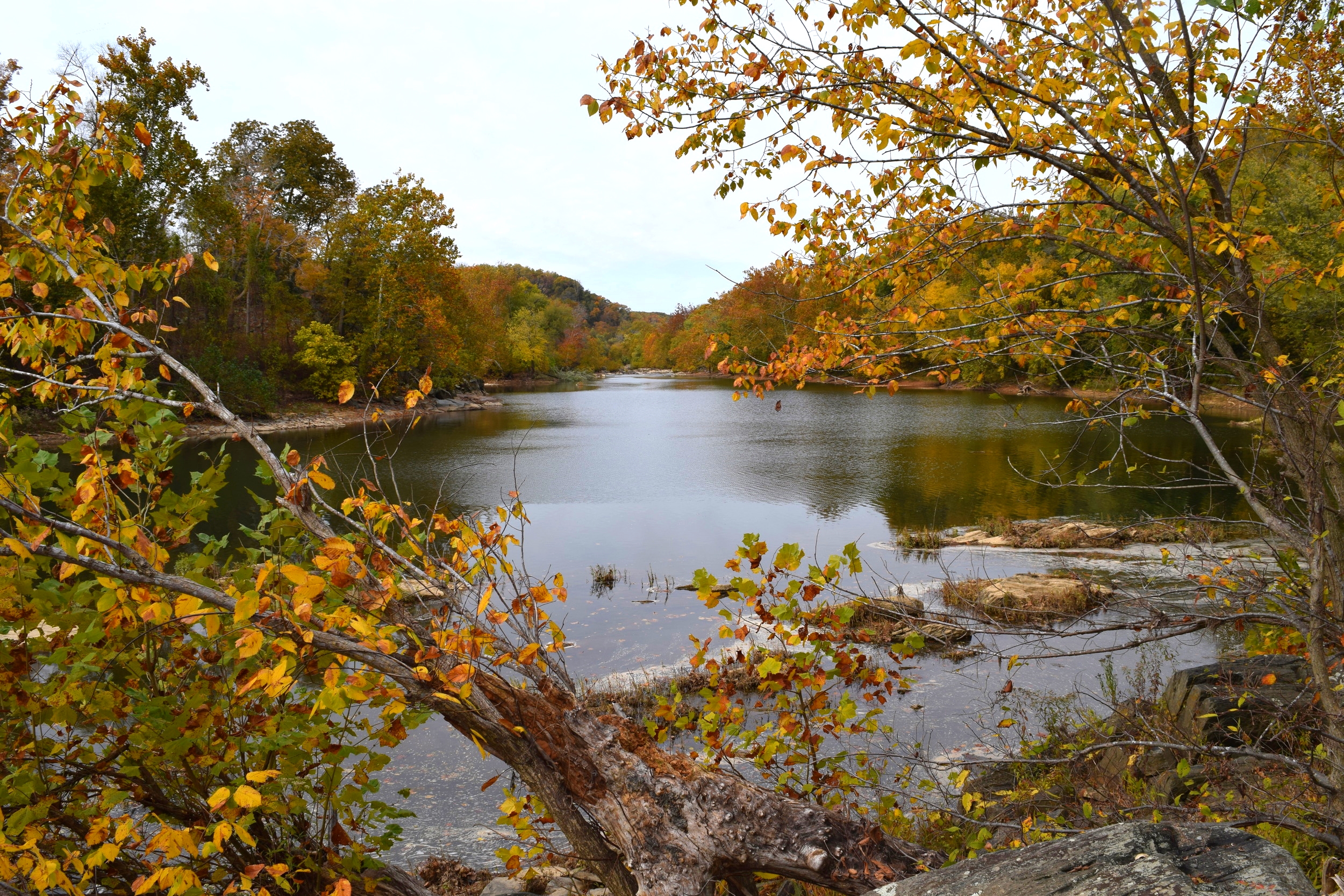
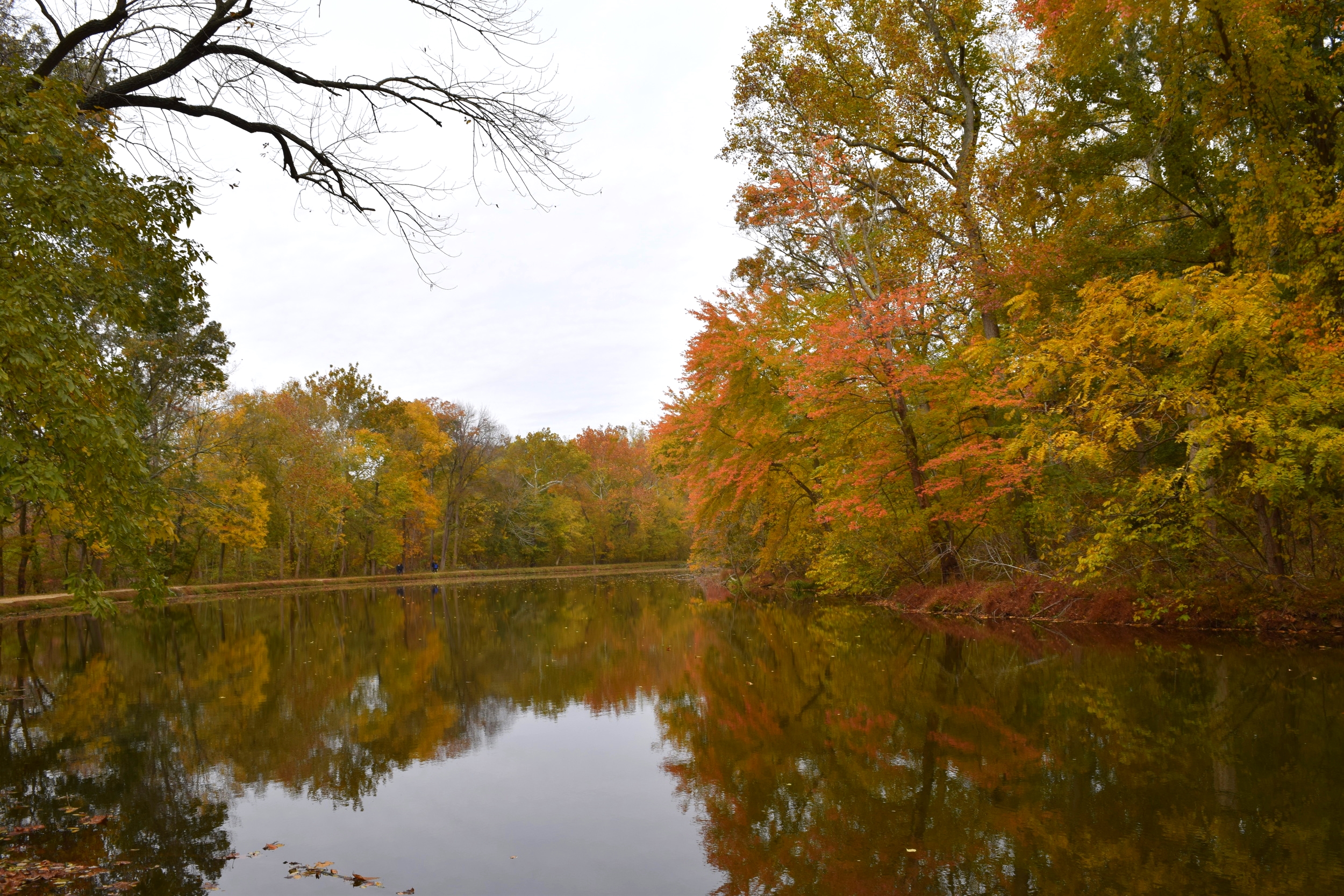
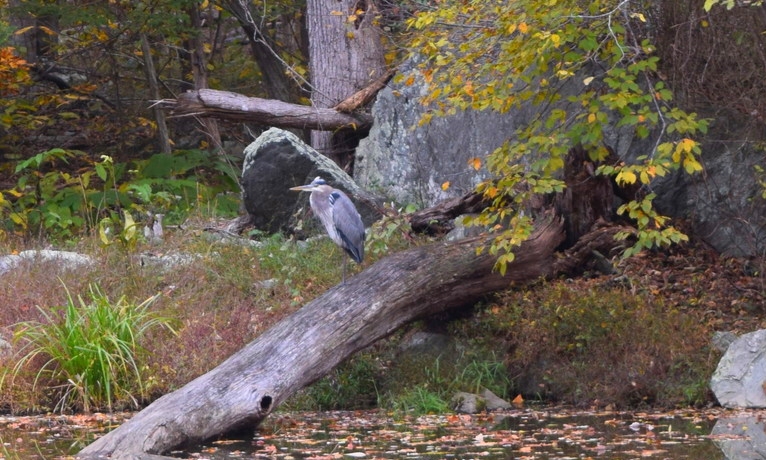















We talk a lot about the value of the Potomac as a source of drinking water and destination for recreation.
But what about as a place for spiritual exploration?
Hike along the Billy Goat Trail with Melissa from Team Potomac and Beth Norcross with the Center for Spirituality in Nature as they explore the spiritual value of our hometown river.